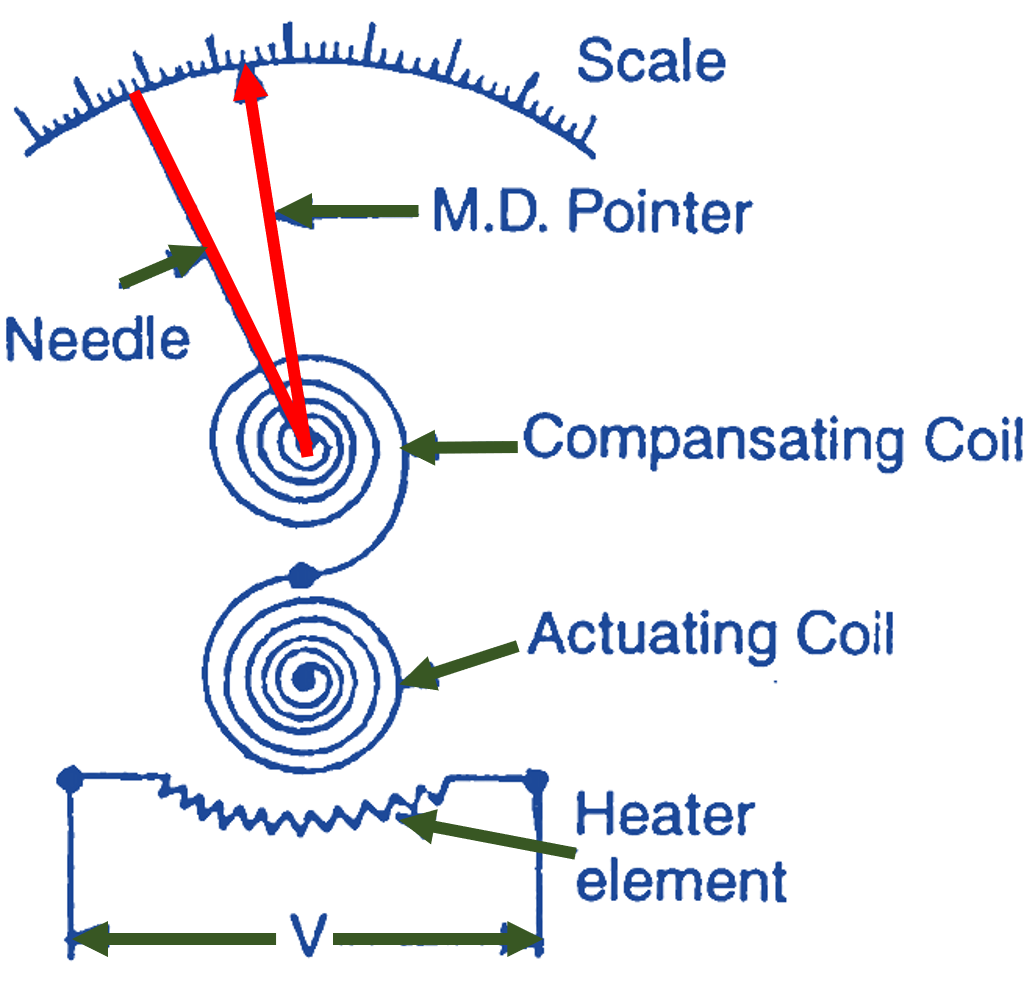In this topic, you study the definition, theory, types & diagram of Maximum Demand Indicator.
The maximum demand indicator actually measures the maximum demand of consumer. The main characteristic is that these should record to maximum power taken by the consumer during the particular period, say 15 or 30 minutes. These instruments are designed, as not to take into consideration the movementary overloading because of short circuit or motors starting etc.
Types of Maximum Demand Indicator
These maximum demand indicators are of the following types:
- Recording demand indicator.
- Average demand indicator.
- Thermal type maximum demand indicator.
Thermal type maximum demand indicator. In its simple construction, it consists of two similar flat coils of bimetallic strips. These coils are actuating and compensating coils, The actuating coil is surrounded by an heating element. Both the coils are connected as shown in Fig. 1. The inner end of the compensating coil drives the pointer over a calibrated scale. The bimetallic strip, obviously has the property of curling towards the metal which has low-temperature coefficient. The bimetal is heated by means of the current in heating element, thus the heat developed is proportional to the square of current flowing through the heating element.
Thus the curling or bending of the bimetallic element is transferred to the compensating coil and finally it actuates the pointer. The pointer hits the needle of the demand indicator and move along. The set reading of the maximum demand, once moved cannot come along the needle but will rest there only. The indicator of maximum demand will retain there only until the larger current then the earlier one causes it to advance or it is brought back by the authorised person of supply company.
The compensating coil is used to prevent the effect on demand because of change in air temperature etc.

Fig. 1. Thermal type maximum demand indicator.
Advantages of Maximum Demand Indicator
Followings are the advantages:
- It is suitable for A.C. and D.C. both.
- It is robust and cheap.
- It can withstand the momentary overloading.
Disadvantages of Maximum Demand Indicator
Followings are the disadvantages:
- The readings are based on the production of heat, so the voltage should be constant for that current.
- The scale is not uniform because the heat is proportional to the square of the current.
- It is not so sensitive.